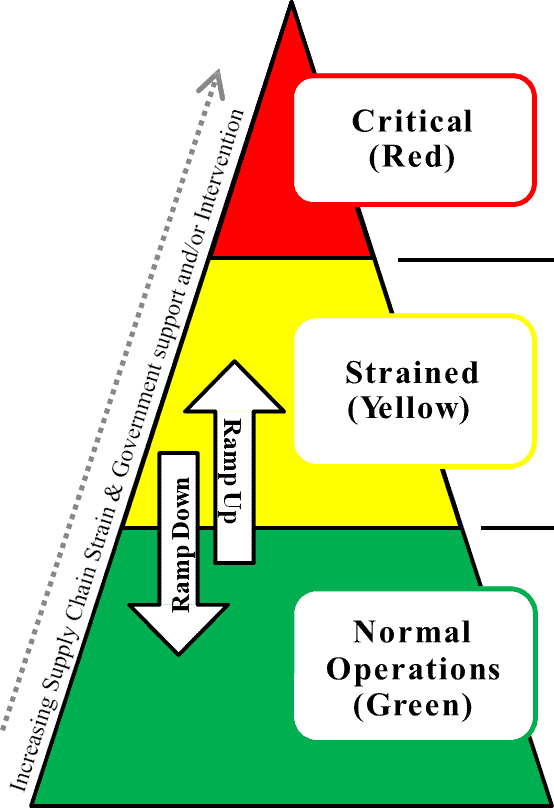Putting The Medical Supply Chain To The Test
September 2025
By Kathryn DiBitetto
Imagine being able to assess the health of the U.S. medical supply chain with a single glance. That’s the idea behind HIDA’s Traffic Protocol Partnership, a joint effort with federal agencies to develop a color-coded system (green, yellow, and red) that signals the operating status of the medical supply chain.
This “supply chain traffic light” was put through its paces at HIDA’s recent Resilience & Preparedness Summit, where healthcare industry leaders and federal officials participated in a series of tabletop exercises simulating real-world disruptions. The scenarios were designed to stress-test the protocol across multiple types of supply chain shocks: a hurricane impacting East Coast ports, cybersecurity attacks on the West Coast, and retaliatory tariffs imposed mid-crisis.
The exercise proved the value of the protocol — but also highlighted areas for improvement. Participants walked away with a shared understanding that while the framework shows promise, fine-tuning is needed to make it a reliable, shared decision-making tool during times of crisis.

Three Key Takeaways Emerged
Build Consensus On Terminology
Participants noted that alignment on key terms is essential for consistent situational awareness. A major example: the term “allocation” means different things to different organizations. Without a shared definition, stakeholders had difficulty agreeing on when the protocol should shift from green (normal operations) to yellow (moderate disruption). Establishing a common language across public and private sectors is a necessary next step.
Disaggregate Supply Chain Stressors
One of the most valuable aspects of the exercise was the ability to isolate different types of stress. Participants agreed on the importance of distinguishing among demand shocks (such as a surge in PPE use during the COVID-19 pandemic), supply shocks (like manufacturing disruptions from hurricanes), and logistical shocks (including port closures, cyberattacks, and labor actions). Understanding how each type of disruption affects the broader supply chain enables better mitigation strategies and more targeted responses.
Keep The Conversation Going
HIDA’s strong relationships with federal partners were a key strength during the exercise. Participants drew on real-world experiences to shape their decisions, emphasizing the need for ongoing collaboration. The protocol is not a static tool—it will evolve. HIDA plans to refine it with continued input from both industry and government, including at the upcoming annual
MedSupplyChain Conference, where the next iteration will be put to the test.
In today’s complex and interconnected healthcare ecosystem, having a shared framework to assess and communicate the state of the medical supply chain isn’t just helpful — it’s essential. With continued input and collaboration, the Traffic Protocol Partnership has the potential to become a vital tool for readiness and response.
Also published in Repertoire Magazine
Download The Playbook Download Communications Plan

Kathryn DiBitetto
Vice President, Government Affairs
703-838-6115